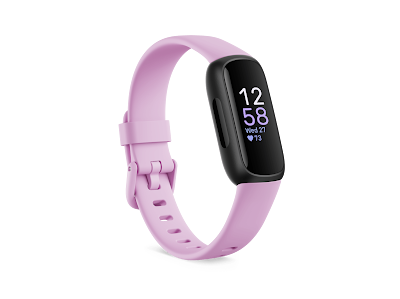Let me tell you—when I first decided to buy a fitness tracker, I nearly gave up before I even started. There were just too many choices. From budget bands to flashy smartwatches with features I couldn’t pronounce, I was overwhelmed.
Sound familiar? If you’re a beginner trying to dip your toes into the world of fitness tech, I got you. Picking the right tracker doesn’t have to be a stressful maze of tech specs and sales pitches. In fact, making the right choice now can help you stay consistent and motivated long-term.
Let’s break it down—casually, honestly, and without the fluff.
Why a Fitness Tracker Can Be a Game-Changer for Beginners
 |
| Xiaomi Band 8 |
Honestly, I thought fitness trackers were just expensive pedometers until I actually wore one. That little band on my wrist made me rethink how much I sit, sleep, move—or don’t move!
Here’s why it can be a game-changer for someone just starting out:
- Instant Accountability: Every step, every minute of movement gets logged. There’s no lying to yourself anymore.
- Positive Reinforcement: I remember getting a “you hit your goal!” buzz on my wrist one evening. Silly? Maybe. But it worked.
- Small Wins Add Up: Whether it’s tracking water, walking more, or finally sleeping 7 hours, these daily nudges create momentum.
Bottom line? It’s like a gentle coach that’s always with you—but without the yelling.
Understand Your Fitness Goals Before You Buy
 |
| Amazfit Bip 5 |
Before you even touch your wallet, ask yourself: Why am I buying this?
Trust me, this question saves time and money.
- Want to lose weight? Look for a tracker that monitors calories burned and steps taken.
- Trying to get more sleep? Make sure it has sleep tracking with readable graphs.
- Just want to be more active? A basic step counter will do the trick—don’t overbuy.
When I first started, I went straight for the most expensive smartwatch… and used only 3% of its features. Oops. Know what you need, not what looks cool on Instagram.
Key Features to Look For in a Beginner-Friendly Fitness Tracker
Alright, so what really matters?
- Steps & Distance: Must-have. It’s the base of all tracking.
- Heart Rate Monitor: Helps understand intensity levels—especially if you're walking, running, or doing HIIT.
- Sleep Tracking: Even simple bands show how much light vs. deep sleep you’re getting.
- Easy App Interface: If you can’t figure out the app, you won’t use it. Trust me.
- Battery Life: You don’t want to charge it daily. Look for 5+ days minimum.
- Water Resistance: If you sweat (or get caught in the rain), this is crucial.
Skip features like SpO2 or ECG if you’re just starting. You likely won’t use them—and they drive up the price unnecessarily.
Budget Ranges and What to Expect at Each Price Point
 |
| Noise ColorFit Pro 5 |
Now we’re talkin’ numbers. Here’s what your money gets you: 1. Under ₹2,000 / $25
Set your expectations. My first ₹3,500 band did the job perfectly—and lasted over a year before I upgraded.
Popular Beginner Fitness Trackers in 2025 (And Why They Work)
 |
| Fitbit Inspire 3 |
You don’t need to spend hours comparing—here are solid beginner picks:
Super easy to use, sleek, and great battery. The app is where Fitbit shines.
2. Xiaomi Band 8
Crazy value for money. Tons of features in a tiny, lightweight package.
Looks like a smartwatch, works like a tracker. Simple UI and strong battery.
For Indian buyers, this one’s got solid hardware and great local support.
All of these strike a nice balance between features, design, and affordability.
What to Avoid as a Beginner Buying Your First Tracker
Here’s what I wish someone had told me before I made a few dumb purchases:
- Don’t fall for style alone. That shiny metal band? It chafed.
- Avoid overkill features. You won’t need VO2 Max your first month of walking.
- Skip trackers with confusing apps. You won’t track if it’s a pain to use.
- Check phone compatibility. Some don’t play well with older Android or iOS devices.
Basically: go for function > flash. Get what helps, not what just looks nice.
How to Actually Use Your Fitness Tracker Every Day (Without Stress)
Let’s be real—buying a tracker is easy. Using it consistently? Not so much.
Here’s what worked for me:
- Start Small: Just track steps for the first week. That’s it.
- Set Daily Reminders: I set mine for 8pm—“Did you hit 5,000 steps today?”
- Disable Unnecessary Alerts: Too many pings = burnout.
- Make It a Routine: I charge mine every Sunday morning with coffee.
You’ll only benefit if it becomes part of your lifestyle—not an annoying gadget you eventually toss in a drawer.
Conclusion
Choosing the right fitness tracker as a beginner isn’t about finding the most advanced one—it’s about finding the one you’ll actually use. Start simple. Focus on features that align with your goals. Don’t overspend just to keep up with tech trends.
Remember: consistency beats complexity. Once you’ve built the habit, you can always upgrade.
👟 Ready to take your first steps? Drop a comment and share which tracker you're leaning toward—or if you’ve got a beginner-friendly one you love already!
This Content Sponsored by Buymote Shopping app
BuyMote E-Shopping Application is One of the Online Shopping App
Now Available on Play Store & App Store (Buymote E-Shopping)
Click Below Link and Install Application: https://buymote.shop/links/0f5993744a9213079a6b53e8
Sponsor Content: #buymote #buymoteeshopping #buymoteonline #buymoteshopping #buymoteapplication



